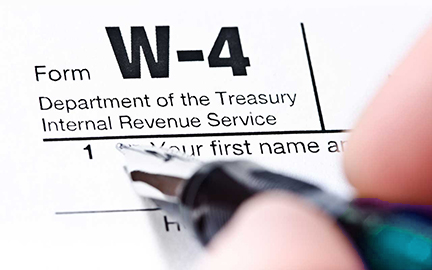
This reminder is for everyone—especially joint filers who ended up owing money in recent years—to make sure your withholding choices don’t leave you with another big tax bill in years to come. Strange as it may sound, for working couples filing jointly who make more than $150,000 year, it might make sense to change one (or both!) of your W-4s to Single status with 0 dependents. The basis is simple: The more money that is withheld in taxes throughout the year, the more likely you are to get a refund, rather than owe, when it’s time to file.
If you’re like most people, you filled out a W-4 form when you started working. It was part of the paperwork, like your I-9 and health insurance forms, and you haven’t thought about it since. In fact, it’s not unusual to think that making changes to your W-4 is only possible—or necessary—in two circumstances:
- When you are newly hired or are changing jobs; or
- When you have a life event, such as the birth or adoption of a child, a divorce, or the death of a spouse.
But the truth is that you can make changes to your W-4 at any time. And there is often good reason to do so. For instance:
- You and your spouse’s combined incomes put you over an income threshold that affects your tax burden.
- You have a second or part-time job, but your W-4 withholdings don’t take this into account.
- You are making more money and your tax bracket has changed.
- Changes to tax laws unexpectedly put you in a higher tax category.
This last one is what many of our clients experienced as a result of the Tax Cuts and Jobs Act that was passed in 2017. And that is why we suggest checking that your withholding makes sense for your current situation.
Though it’s too early to speculate on what changes we are likely to see at the beginning of the new year, we’re still encouraging everyone who has owed money the last two years to consider contacting your employer to change your W-4 allowances and/or status before your first paycheck of 2021.
